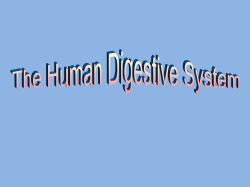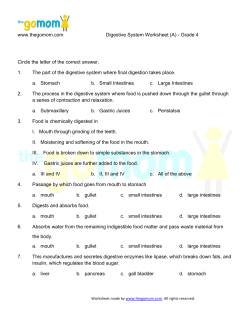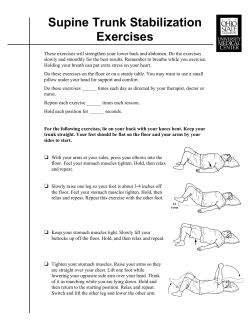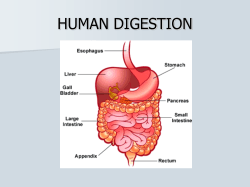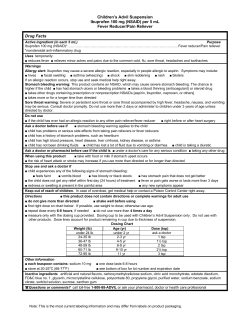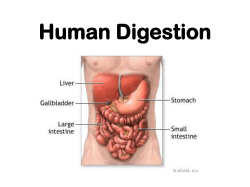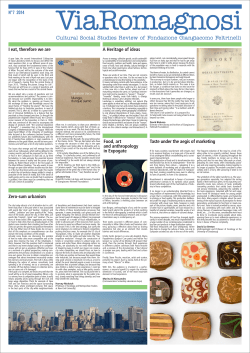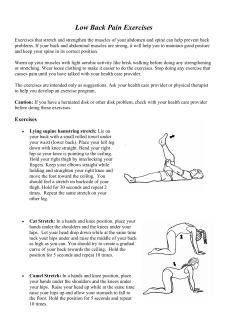
Activity - Education
Chapter 7 Coordination in life processes Human body is a wonderful machine. It is a complicated structure than it appears. Did you ever imagine the complexity of your body? Different life processes in living organisms like respiration, digestion, blood circulation, excretion, nervous system etc., are inbuilt in our body at their specific places and carry out their specific functions in a coordinated manner. We have studied each of the processes in detail nearly in isolation except in the chapter on ‘Control and Coordination’. In this chapter, we shall go a step further to experience the complexsities involved and appreciate the wonderful integration in our life processes. Let’s recall the parts of the digestive canal or gut, that are involved in the digestive process where the food is broken down at different stages. • Write down the parts of the gut where the journey of food starts from mouth to anus. • Which type of life processes would be involved in the breakdown of food in the stomach? • If any of those processes fail to function, what affect would it have on our body? Every process is dependent on other to keep the body in good condition. To understand this concept we analyze how digestive system is coordinated with other systems as an example. We shall study the digestive system from feeling hungry to utilization of food, illustrating the inter connected processes going on in our body. 144 X Class Coordination in life processess Feeling Hungry • How do we know that we need food? Activity-1 Let us observe the following table. Identify and tick those options that you think makes you feel hungry. Table-1 Smell of food Taste of food Sight of food Being tired and exhausted Need of food • What stimulates hunger? • What would be the result of stimulation of hunger? • Which system do you think would send the signals to make us realize that we are hungry? Thought of food Well, a major cause for feeling hungry lies in the physiology of blood circulation. Levels of different substances are generally maintained in the blood mainly by our digestive system. One of the major substances is glucose. When its levels in the blood fall, we get hunger pangs in stomach. This again involves production of a series of proteins, some of which are hormones like Ghrelin. Secretion of the hormone “Ghrelin” in the stomach when it goes empty. Ghrelin is secreted from certain cells in the wall of the stomach. Hunger contractions (hunger pangs) start to occur in the stomach due to hunger generating signals that reach the brain from the stomach due to the secretion of this hormone. It is believed that the Diencephalon in fore brain and vagus nerve (10th cranial nerve) plays an important role in carrying these signals to the brain. Hunger pangs continue up to 30- 45 minutes. Increase in ghrelin levels results in sensation of hunger and motivation to consume food. • What kinds of controls are exercised during sensation of hunger? Are they hormonal or neural or both? • Can you suggest any 4 systems involved in the process of generating hunger sensation? When you feel your stomach is full and there is no need of food any Free distribution by A.P. Government 145 more, another hormone leptin is secreted that suppresses hunger. Usually we take food at a particular time. Every day we usually start feeling hungry at that time. You may have experienced this in your school during lunch hour. Outcome of sensation of hunger We find that different organ systems are involved in the digestive process. Let us find more about how the organ systems are involved. Feeling hungry leads us to consume food. Sometimes you may have often experienced that stale food is out rightly rejected even before intake. • What plays a major role to identify stale food? • If you are having a tasty dish do you think the smell of it increases your appetite? Taste and smell are closely related Taste and smell are intimately entwined. This close relationship is most apparent in how we perceive the flavors of food. Anyone with severe cough and cold can not make out the difference in tastes of certain food items. Actually, what is really being affected is the flavor of the food, or the combination of taste and smell. That’s because only the taste, not the food odors, are being detected. Taste itself is focused on distinguishing chemicals that have a sweet, salty, sour, bitter, or umami taste (umami is Japanese for ‘savory’). However, interactions between the senses of taste and smell enhance our perceptions of the foods we eat. The following activity helps us to observe how are taste affected by the sense of smell. Activity-2 Chewing, cumin (fenugreek), sounf (fennel seeds), potato and apple First close your nose with your fingers. Pop in some zeera in your mouth and chew it for some time. After that, chew some sounf. Could you recognize the taste? How long has it taken to know the taste? After some time wash your mouth and repeat the activity by chewing a piece of an apple followed by a potato(remember to close your nose). • What are your observations? To conclude, if you want to taste the food material, the food should dissolve in saliva. On the other hand, we can taste the food that is in the form of liquid only. We know that different types of taste buds are present 146 X Class Coordination in life processess on the tongue. You have also learnt about different types of papillae (taste buds) on the tongue for different tastes in ninth class. Let us recall them. Only after the dissolved food enters into the cup like taste buds, the sense of taste is carried to the brain for analysis. Then only we will know the taste of the food material. • villate apillae foliate papillae fungiform papillae Could you know the taste of both or did it taste fig-1: Papillae on tongue the same? Why? When we smell, the air borne substances get dissolved in the watery film of nasal mucus. The chemoreceptors in nose are other wise called olfactory receptors which trigger signals in the form of nerve impulses to the brain where smell is detected. Similarly as we take food into our mouth the taste buds sends signals to the brain. Picking up the slight differences in smell the food tastes are identified in our brain. • What happens when we put a food material in our mouth? • Name the parts in the mouth that help us to taste food. Let’s find out more about the role of these parts. Activity-3 Take a pinch of asafoetida powder or garlic and rub it on hand kerchief or tissue paper. Close your eyes and smell it. Then try to identify taste of different types of food materials with the help of your friend. • Does garlic have a stronger scent than apple? How do you think the stronger scent affect your sensation of taste? • How many food materials you have identified correctly? • Write a few lines on relation between smell and taste? • Have you ever felt that a particular food is tasty just by looking at it? Sometimes mouth starts watering just by hearing the name like tamarind / lime / mango etc., Now let us summarize the result of the activities with the help of your answers. In general, we prefer the food material, which is attractive to our eyes, and flavor to nose, then we taste it. Therefore, when we eat, without our knowledge, we use our sight, nose and tongue for selecting food for ingestion. Free distribution by A.P. Government 147 Russian scientist Pavlov has conducted experiments and found that even the thought of food will water your mouth (conditioned reflexes). You have discussed about Pavlov experiment in the chapter animal behavior in class 9th. • Are there any other sensation that affect taste? • What happens to your taste sensation while sipping hot milk or tea? You may also find something more tastey when they are hot. While some others are relished cool. • What do you think could be the range of temperature for us to relish food items? Taste is something connected to the tongue and the palate Let us do a simple activity to see the role of different parts of the mouth in helping us to taste. Activity-4 Sugar crystals over the tongue Place some sugar crystals on your tongue keep your mouth opened and see that your tongue doesn’t touch the palate. Record the time from the moment you placed the crystals on your tongue till you got the taste by using stop watch. Now repeat the test by placing the sugar crystals on the tongue palate and pressing it against the palate. Record the time from placing sugar crystals to getting the taste .Or put a drop of sugar solution tongue on your tongue using a dropper. fig-2: Tongue and palate • Can we taste on dry tongue? • Which way helped you taste faster ? Why? Based on the above activity we know that taste can be identified easily when the tongue is pressed against the palate. As we know the tongue is sensory in function and contains taste buds. These taste buds are tiny papillae with an opening on top. Within them there are several taste sensitive cells. Any food substance when placed on the tongue gets dissolved in the saliva secreted by salivary glands in the mouth. When the tongue is pressed against the palate the food substance is pressed against the opening of the taste bud letting it to reach the taste cells and triggering taste signals. Finally the taste is recognized in the brain. 148 X Class Coordination in life processess Taste Nose Mouth Tongue Brain Olfactory receptors Salivary glands Taste buds • What do you think would happen if the salivary glands do not function in our mouth? • Suppose your taste buds were affected what would happen to your interest in having food? Mouth - the munching machine Would you be able to comfortably munch your food if you had lost some of your teeth? Activity-5 To show break down of food by using the model of chalkpiece kept in vinegar Break a piece of chalk into two halves. Crush one half to tiny pieces leaving the other as it is. Take two small mineral water bottles (1/2 ltr bottle) cut them into two equal halves and discard the upper portion. Now we have two beakers from the lower cut portion. Fill them half with vinegar and add the crushed chalk to one beaker and the other uncrushed half chalk to the other. Obseve them after half an hour or so. • Which one dissolved faster the crushed chalk or the whole one ? The above experiment tells us the need of mechanical crushing of food. Hence the food in the mouth has to be broken down into tiny pieces to increase the surface area for action of substances that aid in digestion. • How does this process of mechanical crushing go on in the mouth? • Which parts in the mouth are involved in this? • What are the systems involved in this process? You know that teeth helps in chewing food material. Let us know about different types of teeth in our mouth and how they helps in digestive process. Free distribution by A.P. Government 149 Activity-6 Observe the model or chart of jaw, how are the teeth arranged? Are all the teeth similar in molars (3) shape and size? Is there any relation between } premolars (2) shape and function of the teeth? Dental formula canine (1) explains the arrangement of teeth. On the basis inscissors (2) of the figure try to guess what could be the the function of molars? You had studied in earlier classes inscissors have sharp edges, canines have sharp and pointed edges while molars and fig-3: Dentition premolars have blunt and nearly flat surface. • What do you think could be the function of inscissors? } } • Which set of teeth help in grinding food? • Which set helps in tearing food? • What is your dental formula? Now fill up the following table with proper information based on the figure given here. Table-2 Type of teath Number Shape Function The circular muscles of the mouth enable the food to be pushed into the oral cavity and to be moved around. As the food cannot be swallowed directly the teeth grind, chew and shred it. This process is called mastication. For this purpose the surface muscles of the jaw help in biting and chewing actions, and move the jaw up, down, forward and backward during food mastication. You may have observed your lower jaw moving up and down as you chew food. The teeth help in cutting and grinding while tongue movements evenly spread out the food and help in mixing it with saliva. The muscles of the mouth enable the food to be pushed in the oral cavity and to be moved around. The fifth cranial nerve has been found to control the movement of muscles in the jaw. 150 X Class Coordination in life processess • Does the level of saliva secretion change due to presence of food in the mouth? • Can the process of chewing go on in the absence of saliva? • Does the saliva have any other roles to play? Let us find out the role of saliva. Activity-7 Action of saliva on flour (ata) Take a test tube half filled with water and add a pinch of flour to it. Shake the test tube well till the flour gets mixed. Take a few drops of this in a watch glass and test for the presence of starch by putting a drop of diluted tincture iodine in it. A blue black color confirms the presence of starch. Now again dissolve a pinch of flour into half filled water in a test tube. Now divide the mixture into two equal halves by transferring it to another test tube. Note that both the test tubes have the same amount of solution. Add a teaspoon of saliva to one of the test tube and mark it. Do not add anything in the other test tube. After some time (45minutes) add a drop of dilute Tincture Iodine solution to test tubes containing the solution. • Do you observe any change in the solutions? Why does the change occur? • Do you think the same process goes on in the mouth when food is taken? Under the action of autonomous nervous system saliva is secreted by three pairs of the salivary glands to moisten the food to make chewing and swallowing easier. As a result of chewing, food forms into a slurry mass called ‘bolus’ that is transported into the oesophagus by the action of swallowing with the help of the tongue. The enzyme salivary amylase in the saliva breaks down the large starch molecule into smaller subunits usually into sugars. The mechanism for swallowing is also under nervous coordination and its control center is somewhere in the brain stem (medulla oblongata and others). During mastication food size becomes convenient to swallow. • What is the use of such an increase in surface area of food? • What about the nature of medium for salivary amylase to act on food component? • If we swallow food material directly without mastication what will happen? • Do you think the pH of our mouth changes? Free distribution by A.P. Government 151 Travel of food through oesophagus The oesophagus receives the food pushed by the swallowing action of the mouth. • What are the systems that come into play for swallowing food? The following schematic representation shows some functional and stuctural attributes of oeasophagus. Observe it and answer the following questions. passes food to stomach by wave like movement of walls (peristalsis) Walls secrete mucus slimmy substance Long tube upper end connects to pharynx Oesophagus lower end connects to the stomach muscular and elastic walls carry on wave like movement by contraction and relaxation • What does the schematic diagram tell us about the oesophagus? • What kind of the tube is oesophagus? • How does mucus help in passage of food? Activity-9 Making a model of oesophagus to observe how bolus moves forward Take a piece of waste cycle tube and insert one or two potatoes into it. Lubricate the inner side of the tube with oil. In the same way smear oil over the potatoes. Insert oil coated potatoes in the tube. Now try to push the potatoes by squeezing the tube. • How do you squeeze the tube to make the potatoes pass through? • Do you think that the muscles in the wall of the oesophagus have to do something like this? • How did oil heip you in pushing the pototoes through the pipe? Peristaltic movement in oesophagus fig-5: Potato in cycle tube Look at the fig-6, which shows wave like movement of wall of oesophagus and observe the position of the food bolus. Free distribution by A.P. Government 153 epiglottis up oesophageal sphincter contracted relaxed muscles contracted muscles • How did the position of the bolus change? • What is the similarity of movement of food illustrated in the diagram and the activity performed by you? The walls of the food pipe secrete a slippery substance called mucus. Mucus lubricates and protects the oesophageal walls from damage. This bolus sphincter relaxed helps the food bolus to slide down easily just as the oiled potatoes that move in the tube. Besides this, the saliva in the bolus also aids in easy stomach movement of food, which moves into the stomach. The wall of the oesophagus is made up of two fig-6: Peristalic movement of bolus kinds of smooth muscles. The inner layer consists of circular muscles and the outer layer of longitudinal muscles. Contraction of the circular muscles results in narrowing of the oesophagus just behind the bolus. So the food is squeezed downwards. Contraction of the longitudinal muscles infront of the bolus widen the tube, this results in shortening of that particular part of the oesophagus. Contraction and relaxation of these muscles bring in a wave like motion that propels the food bolus into the stomach by the action called as “peristalsis” (you have studied about this in the chapter on nutrition). This is involuntary and under the control of autonomous nervous system. • What makes the movement of the food bolus in the oesophagus easy? Think why people are advised not to swallow food without chewing properly or do not eat in hurry. Stomach the mixer and digester • Why do you think the stomach is structured like a bag rather than a tube like oesophagus? • What sets such processes into action? When the food is in the oral cavity, the nerves in the cheek and tongue are stimulated. These carry messages in the form of nerve impulses-to the brain. These messages are transmitted from the brain, to the wall of the stomach, and stimulate the gastric glands to produce gastric juice. The walls of stomach secrete juice containing hydrochloric acid (HCl) Most of us may have experienced belching and the burning sensation after it. What do you think may have caused the burning sensation? These secretions are stimulated by the nervous system. The contraction of the 154 X Class Coordination in life processess stomach muscles squeeze and mix the food with the acids and juices of the stomach. These digestive juices turns the food into a smooth porridge like consistency called chyme. Some large protein molecules are also broken down here. • What stimulates stomach muscle into action? • What causes the stomach to churn and mix the food? As the process of digestion in the stomach nears completion, the contractions of the stomach decrease. What would be the reason? Which substance present in blood regulates contraction of stomach? This prompts the muscles, called as pyloric sphincter at the opening of the stomach and the first part of the small intestine or duodenum, to relax. This opens the pathway into duodenum releasing the partially digested food (chyme) in small quantities into the duodenum. • Why should only a small quantity of food be passed from stomach to duodenum? pyloric valve closed Propulsion: Peristaltic waves move food from one part to the other. pyloric valve closed Grinding: The most vigorous peristalsis and mixing action occur close to the pylorus. pyloric valve slightly opened. Retropulsion: Small amounts of chyme is pushed into the duodenum, simultaneously forcing most of it back into the stomach. fig-7: Peristalic movement in stomach Peristalsis involves the contraction of the muscle behind the food and the relaxation of the muscle in front of the food giving rise to a thrust that pushes the food forward through the digestive canal. A wave of contraction followed by relaxation in muscles helps in forward movement of food. • What is involved in bringing about peristalsis? • What is the direction of peristalsis (which end of the gut does it begin)? • What happens if the direction of peristalsis is reversed? Have you observed a ruminating cow/ buffalo under a tree or somewhere else? Carefully observe its neck and throat. Do you see something moving from its throat to mouth? After that, the cow or buffalo starts chewing. It is the bolus moving from a part near the stomach of the animal to its mouth. It is reverse peristalsis. Though it is a common process Free distribution by A.P. Government 155 in ruminants such as the cow, buffalo etc. that have an extra pouch in the stomach to store quickly swallowed food, in human beings it is mainly a protective mechanism to expell unwanted substances from the food canal. We observe that digestion of food starts from the mouth. While the food passes through the gut the food settles for some time for digestion at certain locations. So food does not move uniformly through the digestive system. Let us observe the time period. Table-3 Percentage Emptying of stomach Emptying of small intestine 50% 2.5 to 3 hours 2 .5 hours Total 100% 4 to 5 hours 30 to 40 hours (Transit through colon) (These are only averages. The movement of materials varies among individuals and time after different meals.) Our stomach is not like a bag with specific volume. It is like a pouch which is elastic in nature. the size of the stomach increases based on the food that we intake. Digestive juices are produced depending on the quantity of food material. If the stomach would produce same amount of digestive juices irrespective of the food quantity the walls of stomach would be destroyed. We also know that stomach secretes strong acids during digestion. The HCl secreted by the walls of the stomach is strong enough to digest the hard bones as well..Then how is the stomach protected from the secretions of its own acids. To understand this we will perform the following experiment. Lab Activity Take two similar green leaves. Grease one leaf with petroleum jelly leave the other free. Add 1 or 2 drops of some weak acid on both the leaves .Observe them after half an hour or so and write your observation in your note book. • Which leaf was affected by the acid? • What kind of change did you observe in the leaves? • What saved the other leaf from the effect of acid? Mucus secreted by some cells present in the walls of the stomach 156 X Class Coordination in life processess form a thin lining on the walls of the stomach. This counters the action of acid. The function of petroleum jelly can be compared to that of mucus lining the stomach walls. Hence the stomach is protected from damage being caused by the secretion of its own acids. Travel of food from the stomach to the intestine Now food is a soup like mixture when it leaves the stomach and enters the small intestine. When the food enters the intestine the acidic nature of the chyme initiates the production of hormones like secretin and cholecystokinin which stimulate pancreas, liver and walls of small intestine to secrete pancreatic juice, bile juice and succus entericus. The absorption of nutrients by villi in the small intestine is a very selective process. The walls of the intestine allows only tiny nutrient particles to pass through. • Why do you think small intestine is long and coiled? • What process is involved in this process of absorption? Activity-10 Paper tube and folded papers Take 10¯20cm size chart paper fold the chart paper and join both ends with gum to make a tube. Now take 20¯20cm chart paper and make a tube as mentioned the same above try to insert the big tube in small one. Can you? It is not possible. Now take another 20¯20cm chart paper fold the paper as many folds as possible. Now join both ends to make a folded paper tube. Try to insert folded tube in first tube. Can you? How is it possible? • Compare the area of the folded papers with that of the roll. Do you find any increase in the area ?If so try to find out the reasons? The inner surface of the small intestine contains thousands of finger like projections called villi. These villi increase the surface area so that the food retained in the folds can remain longer thereby enhancing absorption. • What systems do you think are working together here? • Do you think those systems work together in the whole length of the digestive canal? Why/ Why not? Free distribution by A.P. Government fig-8: Paper tube epithelium network of blood mucus mucus gland lacteal (part of fig-9: Schematic diagram of a villus 157 The digestive tract is unique among internal organs because it is exposed to a large variety of physiochemical stimuli from the external world in the form of ingested food. As a consequence, the intestine has developed a rich store of co ordinated movements of its muscular apparatus along with neural apparatus to ensure the appropriate mixing and propulsion of contents during digestion, absorption, and excretion. The neural apparatus of our digestive tract comprises of such a vast and complicated network of neurons that it has been nicknamed by scientists as the second brain! Research in this area is currently investigating how the second brain mediates the body’s immune response; after all, at least 70 percent of our immune system is aimed at the gut to expel and kill foreign invaders. Scientists are also working to find out how trillions of bacteria in the gut ‘communicate’ with the cells of gut nervous system. A deeper understanding of this mass of neural tissue, filled with important neurotransmitters, is revealing that it does much more than merely handle digestion or inflict the occasional nervous pang of hunger. The little brain in our inner yards, in connection with the big one in our skull, partly determines our mental state and plays key roles in certain diseases throughout the body. • Often you may have experienced that if you have tension for some reason you start having loose motions. What does this show us? Although its influence is far-reaching, the second brain is not the seat of any conscious thoughts or decision-making. Technically known as the enteric nervous system, the second brain consists of sheaths of neurons embedded in the walls of the long tube of our gut, or alimentary canal, which measures about nine meters end to end from the oesophagus to the anus. The second brain contains some 100 million neurons, more than in either the spinal cord or the peripheral nervous system. This multitude of neurons in the enteric nervous system enables us to “feel” the inner world of our gut and its contents. Stimulating and coordinating the breaking down of food, absorbing nutrients, and expelling of waste requires chemical processing, mechanical mixing and rhythmic muscle contractions that move everything down the line. Thus equipped with its own reflexes and senses, the second brain can control several gut functions often independently of the brain. Several scientists also believe that the system is a way too complicated to have evolved only to make sure things move through and out of our gut smoothly. 158 X Class Coordination in life processess Explusion of wastes via blood through the kidneys, skin etc., are mainly salts, water and urea. Expulsion of wastes Undigested food matter is expelled in the form of stool. • What moves out of the gut? • Two major pathways of waste expulsion are shown above. Which of the two do you think happens exclusively through the gut? Imagine you made a roll by wrapping a hand full of left over tea leaves in a tissue paper. Later you press the roll gently and open it. What did you observe? You find the tissue paper had absorbed the water from the tea leaves. Similarly when the unwanted waste material (stools / faeces) reach the large intestine. The peristaltic waves move the stool into the rectum. The left side of the colon acts like a storage tank of faeces. Water gets reabsorbed and the remaining wastes usually hard mass gets stored in the last part (Rectum) of the large intestine. This smelly yellowish faecal mass usually called as stool is later expelled out of the body through the anus. • What controls the exit of stools from the body? • Do you think the control is voluntary? Why / why not? There are two muscular layers helping the exit of stool. One that is under involuntary control and the other is under voluntary control. These muscular structures help in opening and closing of the aperture of the canal which are called as anal sphincter. • rectum sphincter anus fig-10: Anal spincter Did we have a sphincter in any other part of the digestive cannal? Where was it? Suppose a person has consumed more fluids than what the body actually need. How do think the extra fluid will be removed from the body? We have so far seen how several systems work together to bring about the process of digestion. Where does this process draw energy from to run smoothly? Free distribution by A.P. Government 159 • What is the fate of the digested substances that move into blood from the intestine? If energy has to be obtained from food it has to be oxidised. For this purpose respiration has to go on. During inhalation oxygen moves across the walls of the alveoli and enters the blood. From here it enters the red blood cells and gets distributed throughout the cells of our body. At the same time carbon dioxide from the blood moves into the alveoli of the lungs and breathed out during exhalation. Nutrients in the cells get oxidized and energy is released. • Where is the energy stored? • Which system do you think will remove the excess salts from our body? • What would be the path of salt removal from gut to the out side of our body? During respiration we breathe continually by inhaling and exhaling air. This is an involuntary process controlled by the medulla oblongata of the autonomous nerves system (ANS). During respiration the movement of inter costal muscles/diaphragm moves the ribs cage inflating and deflating the lungs. Air containing more of oxygen enters the blood stream through lungs. If the oxygen has to reach the tissues it has to be circulated through blood. How does this process go on? Hence the process of digestion which is a complex process that involves many organs and organ systems. Though digestion occurs in the food canal, co-ordination of respiration and blood circulation is necessary otherwise oxidation of food and transport of substances which is vital for energy releasing process will not take place. This may lead to the shut down of systems interdependent on each other. Key words Ghrelin, Leptin, Gustatory, Chemoreceptors, Papillae, Food bolus, Peristalsis, Chyme, Pyloric Sphincter, Villi, Medulla oblongata , Brain stem. What we have learnt • The food taken by us it has to be broken down into constituent substances for proper digestion, assimilation and energy releasing processes. 160 X Class Coordination in life processess • • • • • • • • • • • • • • The human digestive system involves both the muscular and nervous systems. A special nervous system that exists in the gut consist of nearly 100 billion nerves that coordinates the muscular activity ,blood flow,digestion and absorption of nutrients and other activities of the food canal (gastro intestinal tract). The hormone Ghrelin secreted in the stomach is responsible for hunger generating sensations. Another hormone leptin that gets secreted suppresses hunger. Taste can be identified easily only when the tongue is pressed against the palate. Taste and smell are closely related. The chemoreceptors receptors present in the nose and and the tongue trigger signals in the form of nerve impulses to the brain where the smell and taste is detected. The saliva secreted maintains an alkaline medium that aids in digestion of starch. Our mouth secretes acid as well ,this gives protection to our mouth from harmful bacteria etc., Under the action of autonomous nervous system Saliva released by the salivary glands moistens the food to make chewing and swallowing easier. The muscular and sensory organ in the oral cavity is the tongue which is not only gustatory in function but also performs different functions including, shifting and mixing the food in the oral cavity and swallowing. The mechanism for swallowing is coordinated by the swallowing centre in the brain stem. Contraction and relaxation of the muscles in the gut brings in a wave like motion that propels the food forward and is called peristalsis. This is a muscular wave that travels the entire length of the food canal. This is involuntary and under the control of autonomous nervous system as well as gut nervous system. The muscular contractions of the stomach churns the food into a semiliquid substance known as chyme. Entry of chyme into the duodenum is regulated by a muscle called as the pyloric sphincter. The strong acid (HCl) renders the pH in stomach acidic causing the protein digesting enzymes to swing into function. Juices secreted in the stomach breaks down the food into a smooth mixture called chyme. The mucus lining of the stomach protects it from damage by its own acids. The coordination among the processes of digestion, respiration and circulation is necessary for utilization and oxidation of food and transport of the nutrients. Muscular and nervous control helps to carry out the processes in a regulated manner. Improve your learning 1. 2. 3. 4. 5. 6. What do you meanby hungerpangs?(AS1) What are the organ systems involved in digestion of food which we eat?(AS1) Rafi said smell also increase our appetite can you support this statement. how?(AS1) Write a note on peristalsis and sphincter function in stomach.(AS1) Observe the given part of the digestive system. What is it? What is it’s role during digestion?(AS1) Give reasons.(AS1) a) If we press tongue against the palate we can recognise taste easily. b) We can’t identify taste when food is very hot. Q.No: 5 Free distribution by A.P. Government 161 c) If glucose level falls in blood we feel hungry. d) Small intestine is similar to a coiled pipe. e) Urination increases when we take lot of fluids f) The process of digestion goes on in a person whose central nervous system has been largerly affected 7. Write difference between the following.(AS1) a) bolus - chyme b) small intestine - large intestine c) mastication - rumination d) propulsion - retropulsion 8. How can you say that mouth is a munching machine?(AS1) 9. What is mastication? Explain the role of different sets of teeth in this process.(AS1) 10. During the journey of food from mouth to stomach through oesophagus. How muscular system coordinate in this process?(AS1) 11. Is there any reason for the intestine to be coiled with many folds.In what way it is helpful during the process of digestion?(AS1) 12. What is the function of peristalsis in these parts?(AS1) a) oesophagus b) stomach c) small intestine d) large intestine 13. How can you justify the enteric nervous system as the second brain of the gut?(AS1) 14. Rajesh feels hungry upon seeing food.Sheela says no to food as she is not hungry.What makes Rajesh hungry and what suppresses Sheelas hunger?(AS1) 15. How are taste and smell related?(AS1) 16. List out the sphincter muscles of the food canal you have observed and give a brief description?(AS1) 17. What experiment should you perform to understand action of saliva on flour? Explain it’s procedure and opparatus that you followed.(AS3) 18. What happens if salivary ducts are closed?(AS2) 19. If size and shape of small intestine is like oesophagus what will happen?(AS2) 20. Prepare a questionnaire to understand nervous coordination in digestion process.(AS2) 21. Suggest a simple experiment to prove the role of palate in recognizing taste.(AS3) 22. Collect information related to feeling hunger from your school library and prepare a note on it.(AS4) 23. Draw the block diagram showing sensation of taste from food material to brain.(AS5) 24. Draw a neatly labled diagram showing a peristaltic movement in oesophagus. Explain the importance of mucus on the walls of food pipe.(AS5) 25. Draw a schematic diagram of villus in small intestine. Explain how digestive system coordinate with circulatory system.(AS5) 26. The mere smell or sight of food stimulates hunger .Describe the process through a neat diagram?(AS5) 27. With the help of a diagram show the movement of food from mouth to the stomach.What muscles and nerves are involved in the movement of food and what is this action called as?(AS5) 28. Prepare a cartoon on Pavlov’s experiment with a suitable caption.(AS6) 29. How do you appreciate stomach as a churning machine .How does this coordination go on?(AS6) 30. There is a great variety in diversified life processes, express your feelings in the form a poem.(AS7) 31. Suggest any two important habitual actions to your friend while eating food, keeping in view of this chapter.(AS7) 162 X Class Coordination in life processess Fill in the blanks 1. 2. 3. 4. 5. 6. 3:2:1:2 is the ratio of our dentition. Here 1 represents ____________ Large protein molecule are broken down in _________ of digestive track. __________ is the strong acid which is secreated during digestion. Olfactory receptors present in ___________ trigger signals to brain. pH of saliva is _________ in nature. Fill in the blanks with suitable words given below. Fluctuation s of hormone (i)_____________ levels results in sensation of hunger and motivation of consuming food. When you feel your stomach is full and there is no need of food any more. Another hormone (ii)_____________ that gets secreted suppresses hunger. When we take food into the mouth it has to be chewed thoroughly. For this purpose the (iii)_____________ muscles help in chewing actions, while the (iv)_____________ muscles of the jaw moves the jaw up,down ,forward and backward during food mastication. The (v)_____________ nerve controls the muscles of the jaw. . Under the action of (vi)_____________ nervous system Saliva is released by the salivary glands moistens the food to make chewing and swallowing easier. The salivary (vii)_____________ in the saliva breaks down the starch into sugars. As a result of chewing the food is transported into the oesophagus by the action of swallowing which is coordinated by the swallowing centre in the (viii)_____________ and the (ix)_____________. The tongue which is gustatory recognizes the taste and (x)_____________ nerve plays an important role in sensation of taste. Choose the right ones. 1) leptin, grehlin gastrin secretin. 2) ghrelin leptin secretin gastrin. 3) deep muscles ,surface muscles ,circular muscles, striated muscles. 4) surface muscles, deep muscles, neck muscles, long muscle. 5) fifth cranial nerve ,second cranial nerve,fifth facial nerve, spinal nerve. 6) central nervous system, peripheral nervous system autonomous nervous system. 7) lipase, sucrase, galactase,amylase. 8) medulla oblongata, cerebrum , 8th spinal nerve,cranial nerve.7th cranial nerve. 9) Pons varoli, brain stem ,medulla oblongata, mid brain. 10)6th cranial nerve, 5th cranial nrve, 10th cranial nerve, optic nerve. Choose the correct answer 1. In which of the following situations you can taste quickly. ( ) a) Put sugar crystals on tongue b) Put sugar solution on tongue. c) Press the tongue slowly against the palate d) Swallow directly without grainding and shreding 2. Peristalsis is because of ( ) a) Contraction of longitudinal muscles. b) Contraction of circular muscles c) Under control of autonomous nervous system d) Digestive secretions. Free distribution by A.P. Government 163 3. Sphincter that helps in opening of stomach into duodenum ( a) Cardiac b) Pyloric c) Anal d) Gastric 4. Glucose and amino acids are absorbed through the following part of villus. ( a) epithelial cells b) blood capillary c) lymphatic vessel d) all 5. The regian in brain portion that controls hunger signals ( a) medulla b) diencephalon c) cerebrum d) mid brain 6. Human organism is an internal combustion machine because of ( a) assimillation of energy from food b) liberate CO2 during respiration c) expel waste food at the end state digestion d) secrete powerful digestive juices ) ) ) ) Annexure Historical evidence of human digestion that led to discovery of other truths The man with a window in his stomach. One fine morning at Fort Mackinac on the upper Michigan peninsula a 19 year Voyageur Alex St.Martin had a gun wound in his stomach that was fired accidentally. The wound perforated the abdominal wall and stomach with profuse bleeding. Dr.Beaumont the army surgeon was called on to attend the wounded man. Dr. Beaumont cleaned the wound and pushed the protruding portions of lungs and stomach back into the cavity and dressed the wound. Dr. Beaumont was surprised to see St. Martin alive the next day as he never expected so. With his medical expertise Dr. Beaumont treated the wound and did his best to extend his life. When the wound got healed completely, the stomach had fused with the body wall leaving a hole. Part of the wound formed a small flap that resembled a natural valve. This allowed Dr.Beaumont to draw out fluids from Martin’s stomach for testing. Dr.Beaumont turned St.Martin to the left side depressing the flap he inserted a 5-6 inch tube into the stomach gathered gastric juice had its components identified. He introduced food through the hole of the stomach with a string attached to it so that he could retrieve the partially digested food for further examination. He conducted many experiments on food digestion to know the function of stomach which had not been done before. He discovered many things that were new to science. For centuries stomach was thought to cook food by producing heat. Also theStomach was viewed as a mill,a fermenting vat or a stew pan. Through his experiments Dr.Beaumonts experiments revolutioned the concepts of digestion. June -on16,1822 became the beginning for the the most pioneering experiments in medicine. He recounted many of his observations and experiments in his journal which says “I consider myself but a humble experimentor “ in which the information provided still obeyed scientific method basing all the inferences on direct experimentation. 164 X Class Coordination in life processess Some of the discoveries of Dr.Beaumont were. 1) He measured the temperature of the stomach during digestion .To his surprise he found there was no change or alteration in temperature. He found the temperature being maintained constant ( 100F/38C ). 2) He found out that pure gastric juice contains large amounts of HCl ,contrary to the previous opinions that gastric was nothing but contains simply water. As suggested by some authors as the most general solvent in nature and of the alimentary canal. Even the hardest bone cannot with stand its action .Even outside the stomach its capable of effecting digestion. Based on the evidences he concluded that HCl as chemical agent that aids in chemical reaction. 3) He found Gastric juice is not stored in the stomach. But ,is secreted when the food is taken. When the food enters the stomach it exites the vessels to discharge its contents immediately for digestion. 4) He understood that digestion begins immediately when the food enters the stomach. He tested the contents of the stomach exactly 20mts after taking food (dinner containing ordinary food of boiled and salted beef, potatoes ,bread, beef and turnips) by collecting the fluids from the flap and found digestion had commenced and was progressing well at that time. 5) He also discovered that food in the stomach satisfies hunger even though its not eaten. (food reaching the stomach without passing the mouth and oesophagus). To confirm his assumptions he made St. martin fast from breakfast time till 4’0 Clock and then introduced food into the stomach through the flap. The sensation of hunger subsided. Though it was fortuitous experiments in medicine connected to digestion raised many questions. • What is the cause of hunger? • How does the brain know the happenings of the stomach? • What causes the gastric juices to secrete? • How and what makes the food to be mixed with the digestive juices? • Does the process of digestion occur independently or involves other systems like nervous and muscular as well ? Free distribution by A.P. Government 165
© Copyright 2025

